This class represents a Lua object of any type. A LuaObject is constructed by a LuaState object using one of the four methods:
The LuaObject will represent only the object itself, not a variable or a stack index, so when you change a string, remember that strings are immutable objects in Lua, and the LuaObject you have will represent the old one.
Proxies
LuaJava allows you to implement a class in Lua, like said before. If you want to create this proxy from Java, you should have a LuaObject representing the table that has the functions that implement the interface. From this LuaObject you can call the createProxy(String implements). This method receives the string with the name of the interfaces implemented by the object separated by comma.
- Author
- Rizzato
-
Thiago Ponte
| org.keplerproject.luajava.LuaObject.LuaObject |
( |
LuaState |
L, |
|
|
String |
globalName |
|
) |
| |
|
protected |
Creates a reference to an object in the variable globalName
- Parameters
-
Creates a reference to an object inside another object
- Parameters
-
| parent | The Lua Table or Userdata that contains the Field. |
| name | The name that index the field |
This constructor creates a LuaObject from a table that is indexed by a number.
- Parameters
-
| parent | The Lua Table or Userdata that contains the Field. |
| name | The name (number) that index the field |
- Exceptions
-
| LuaException | When the parent object isn't a Table or Userdata |
This constructor creates a LuaObject from a table that is indexed by a LuaObject.
- Parameters
-
| parent | The Lua Table or Userdata that contains the Field. |
| name | The name (LuaObject) that index the field |
- Exceptions
-
| LuaException | When the parent object isn't a Table or Userdata |
| org.keplerproject.luajava.LuaObject.LuaObject |
( |
LuaState |
L, |
|
|
int |
index |
|
) |
| |
|
protected |
Creates a reference to an object in the given index of the stack
- Parameters
-
| L | |
| index | of the object on the lua stack |
| Object [] org.keplerproject.luajava.LuaObject.call |
( |
Object[] |
args, |
|
|
int |
nres |
|
) |
| throws LuaException |
Calls the object represented by this using Lua function pcall.
- Parameters
-
| args | - Call arguments |
| nres | - Number of objects returned |
- Returns
- Object[] - Returned Objects
- Exceptions
-
| Object org.keplerproject.luajava.LuaObject.call |
( |
Object[] |
args | ) |
throws LuaException |
Calls the object represented by this using Lua function pcall. Returns 1 object
- Parameters
-
- Returns
- Object - Returned Object
- Exceptions
-
| Object org.keplerproject.luajava.LuaObject.createProxy |
( |
String |
implem | ) |
throws ClassNotFoundException, LuaException |
Function that creates a java proxy to the object represented by this
- Parameters
-
| implem | Interfaces that are implemented, separated by , |
| void org.keplerproject.luajava.LuaObject.finalize |
( |
| ) |
|
|
protected |
| boolean org.keplerproject.luajava.LuaObject.getBoolean |
( |
| ) |
|
| byte [] org.keplerproject.luajava.LuaObject.getBytes |
( |
| ) |
|
If this is a table or userdata tries to set a field value.
| LuaState org.keplerproject.luajava.LuaObject.getLuaState |
( |
| ) |
|
| double org.keplerproject.luajava.LuaObject.getNumber |
( |
| ) |
|
| Object org.keplerproject.luajava.LuaObject.getObject |
( |
| ) |
throws LuaException |
| String org.keplerproject.luajava.LuaObject.getString |
( |
| ) |
|
| boolean org.keplerproject.luajava.LuaObject.isBoolean |
( |
| ) |
|
| boolean org.keplerproject.luajava.LuaObject.isFunction |
( |
| ) |
|
| boolean org.keplerproject.luajava.LuaObject.isJavaFunction |
( |
| ) |
|
| boolean org.keplerproject.luajava.LuaObject.isJavaObject |
( |
| ) |
|
| boolean org.keplerproject.luajava.LuaObject.isNil |
( |
| ) |
|
| boolean org.keplerproject.luajava.LuaObject.isNumber |
( |
| ) |
|
| boolean org.keplerproject.luajava.LuaObject.isString |
( |
| ) |
|
| boolean org.keplerproject.luajava.LuaObject.isTable |
( |
| ) |
|
| boolean org.keplerproject.luajava.LuaObject.isUserdata |
( |
| ) |
|
| void org.keplerproject.luajava.LuaObject.push |
( |
| ) |
|
Pushes the object represented by this into L's stack
| String org.keplerproject.luajava.LuaObject.toString |
( |
| ) |
|
| int org.keplerproject.luajava.LuaObject.type |
( |
| ) |
|
| LuaState org.keplerproject.luajava.LuaObject.L |
|
protected |
| Integer org.keplerproject.luajava.LuaObject.ref |
|
protected |
The documentation for this class was generated from the following file:
- /Users/render/apps/BlowTorch/BTLib/src/org/keplerproject/luajava/LuaObject.java
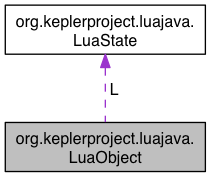

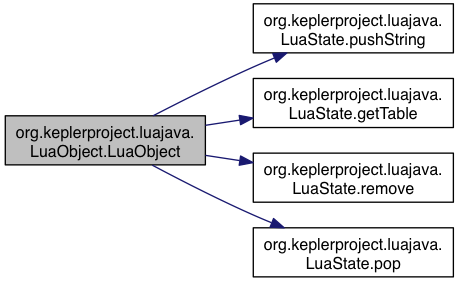
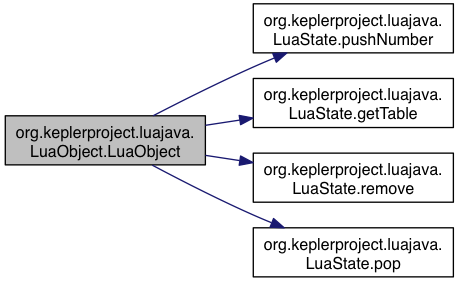
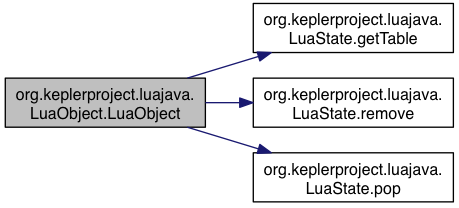
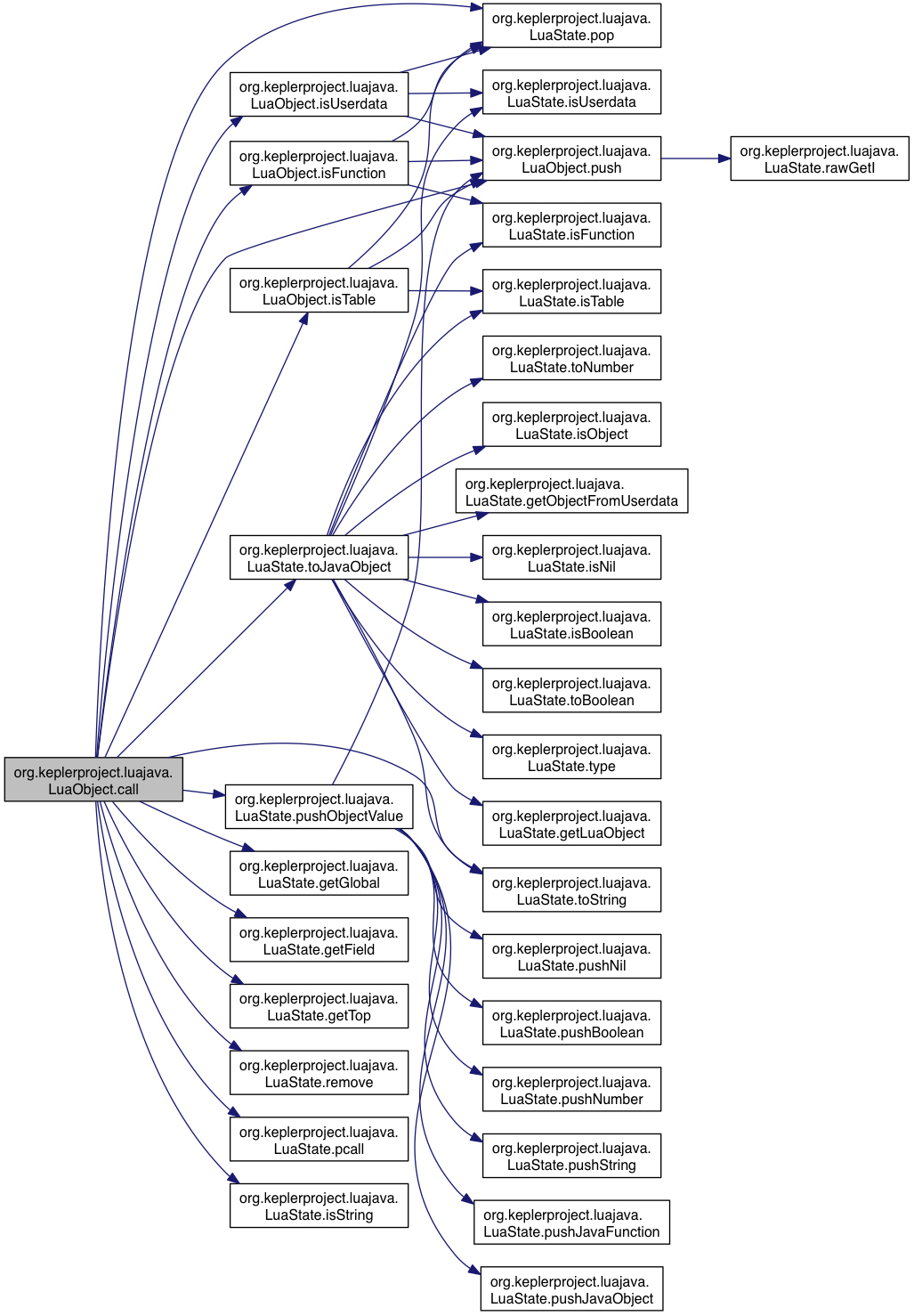

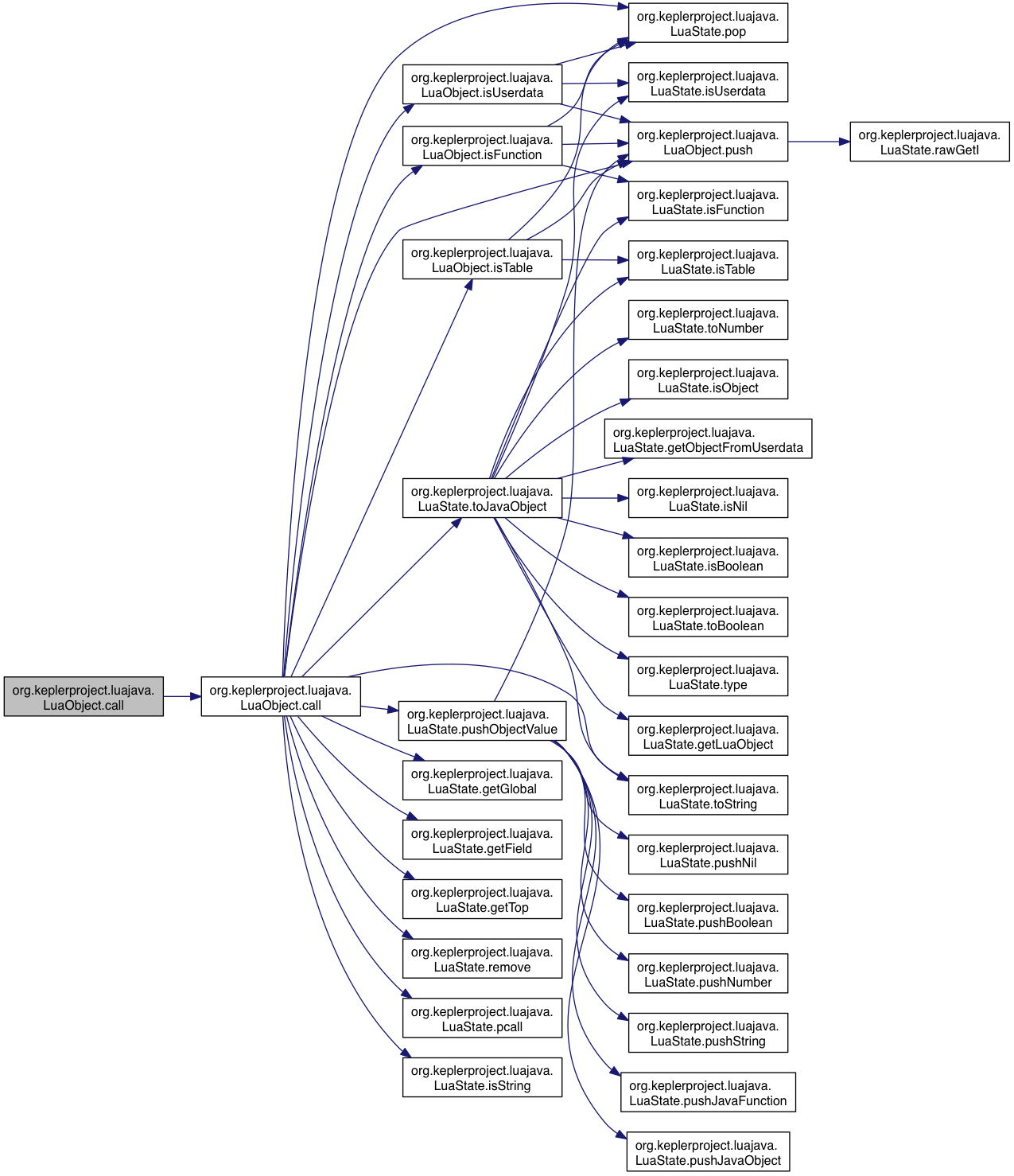




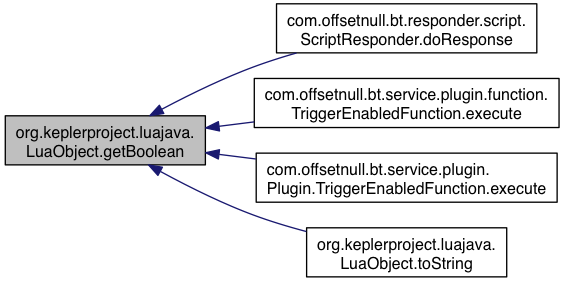








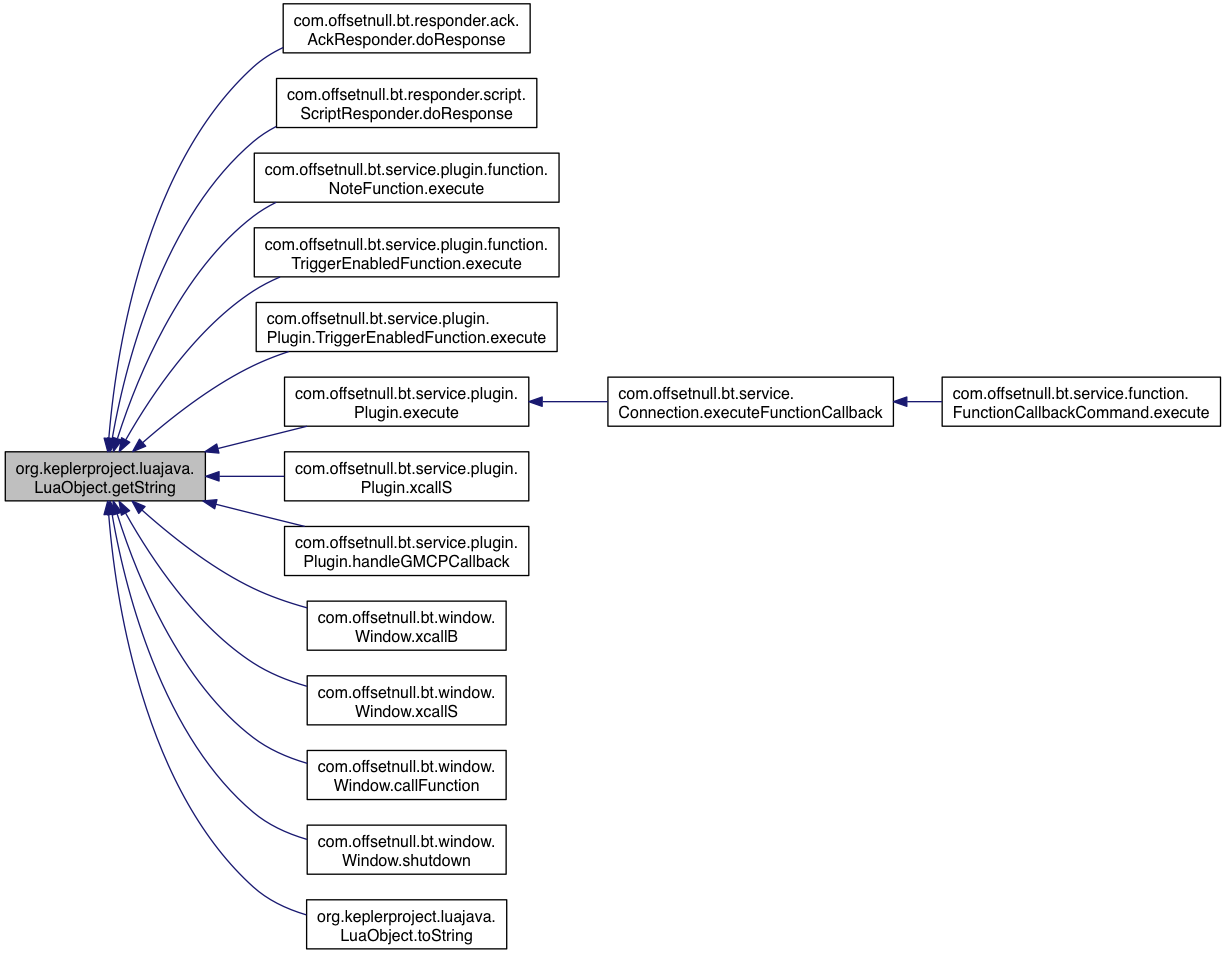



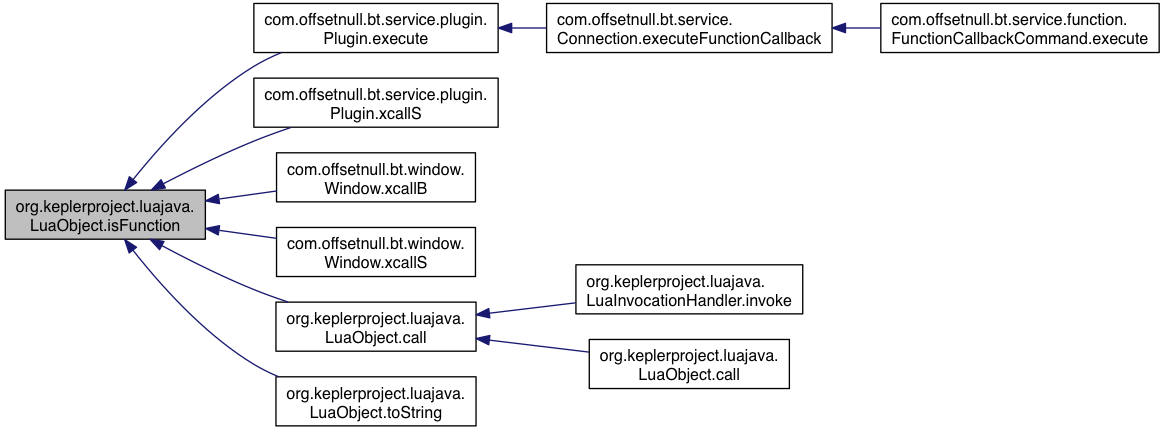















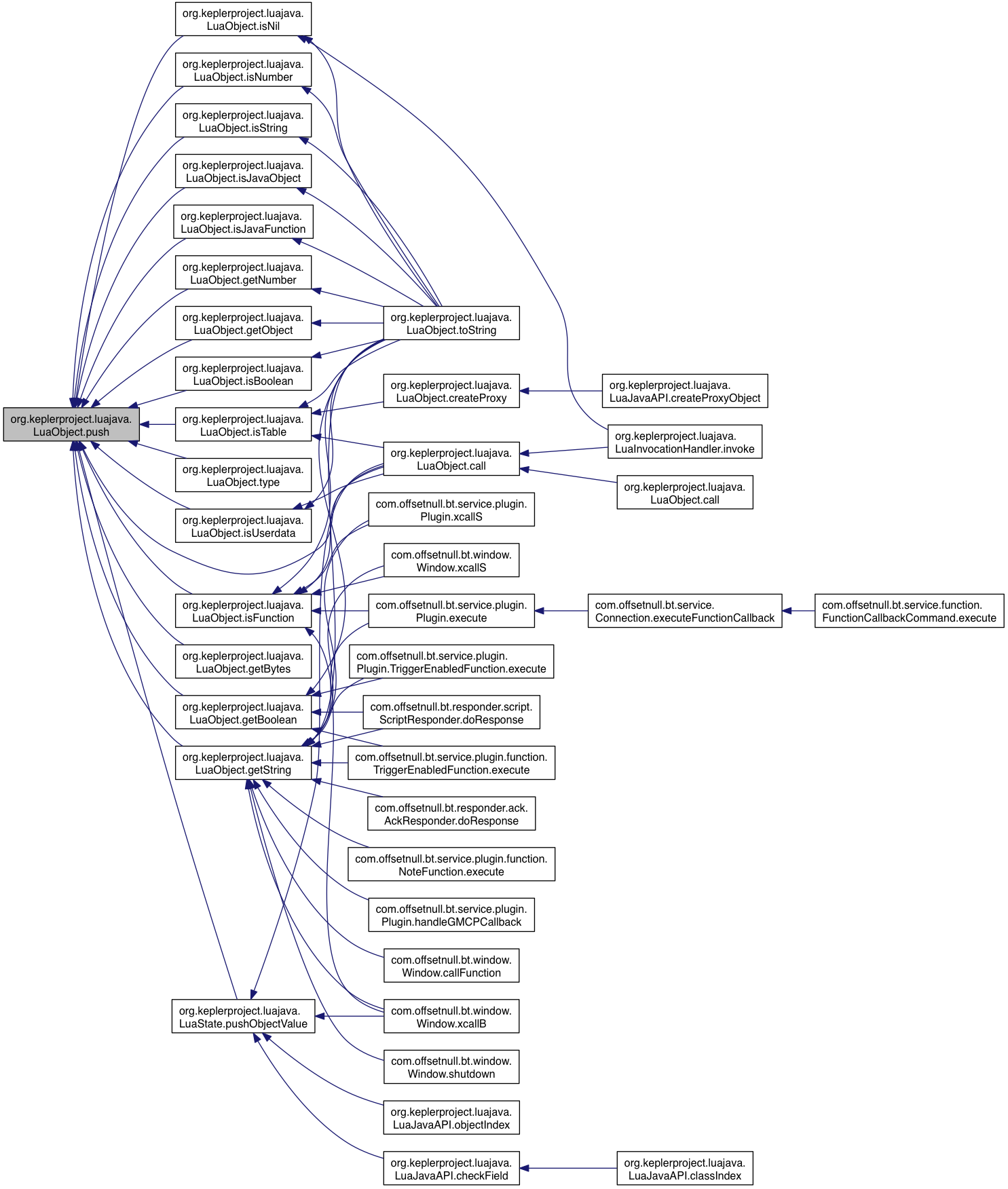
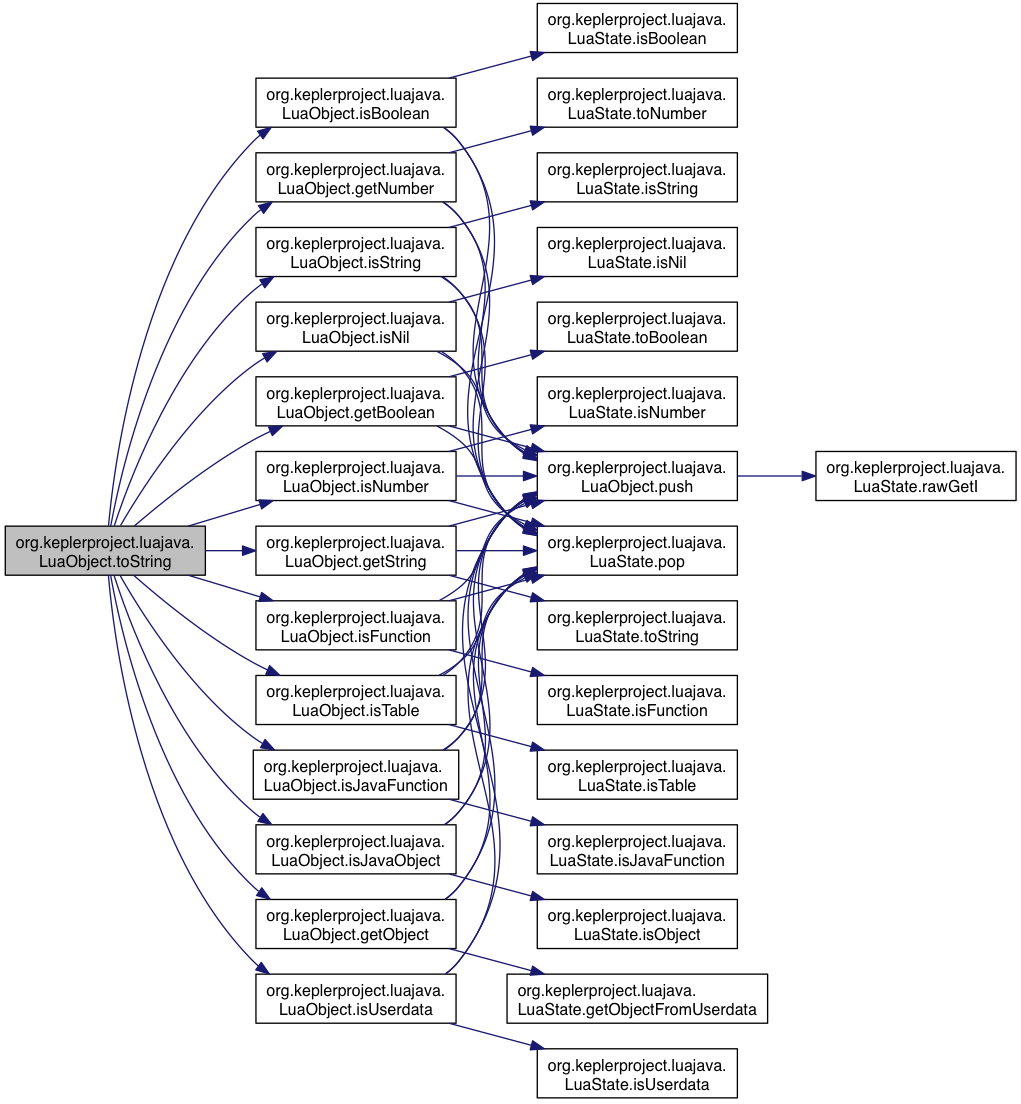

 1.8.3.1
1.8.3.1